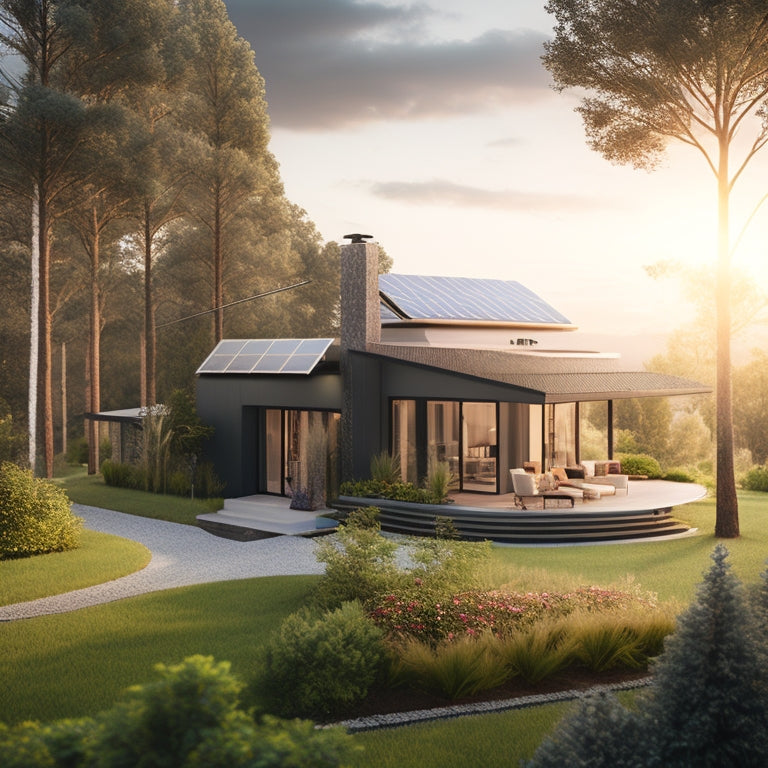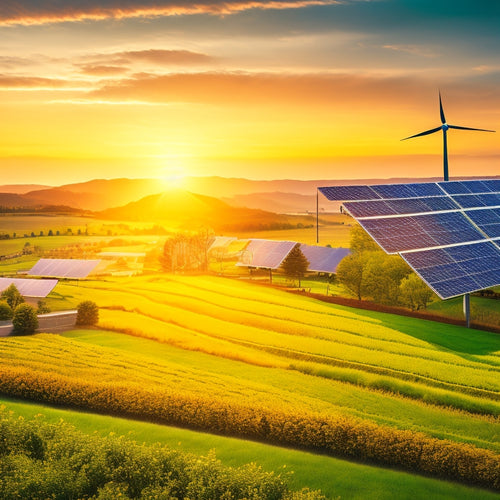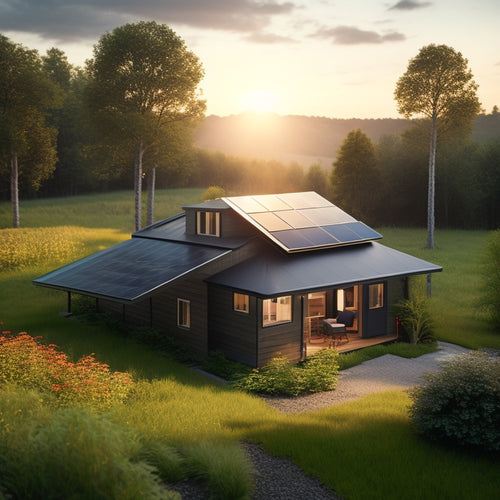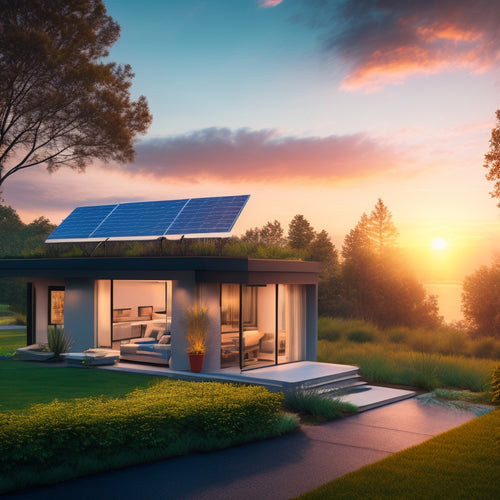
3 Tips for Affordable Home Energy Independence
Share
To achieve affordable home energy independence, you'll want to start by evaluating your energy needs, reviewing past utility bills and conducting an energy audit to determine your energy consumption patterns. Next, choose the right renewable energy system for your location, such as solar panels or wind turbines, and investigate brands and models for cost-effective solutions. Finally, optimize your energy use by replacing incandescent bulbs with LEDs, unplugging unused appliances, and investing in smart home technology. By following these steps, you'll be well on your way to reducing your reliance on the grid and saving on utility bills, and there's more to investigate to maximize your energy independence.
Key Takeaways
- Assess your energy needs by reviewing utility bills, conducting an energy audit, and identifying high-wattage appliances.
- Choose the right renewable energy system based on your location, with solar panels suitable for sunny areas and wind turbines for windy areas.
- Optimize energy use by replacing incandescent bulbs with LEDs, unplugging unused appliances, and upgrading to energy-efficient appliances.
- Consider high-efficiency solar kits for easy installation and cost-effective solutions.
- Invest in smart home technology for remote energy monitoring and control to make informed choices about daily energy consumption.
Assess Your Energy Needs
Before diving into affordable home energy independence, it's essential to assess your energy needs. You need to understand your energy consumption patterns to determine how much energy you require.
Review your past utility bills to identify your average daily energy usage. Consider factors like the size of your home, number of occupants, and energy-intensive appliances.
To get a more accurate representation, conduct an energy audit to identify energy-hungry appliances and their wattage device power requirements. This data will help you determine the right size of the renewable energy system you'll need.
Choose the Right System
About 80% of households can considerably reduce their energy bills by installing a renewable energy system.
Now that you've assessed your energy needs, it's time to choose the right system for your home. You have two primary options: solar panel options and wind turbine choices.
Consider your location, climate, and energy requirements when making your decision. If you receive ample sunlight throughout the year, solar panels might be the way to go. On the other hand, if you live in a windy area, wind turbines could be a more viable option.
Many solar kits, such as the high-efficiency solar panels, offer exceptional performance and easy installation.
Research and compare different brands, models, and prices to find the most efficient and cost-effective solution for your energy needs.
Optimize Your Energy Use
Now that you've selected the right renewable energy system for your home, it's time to optimize your energy use to maximize its benefits. This involves making smart choices about your daily energy consumption habits. Start by replacing traditional incandescent bulbs with LEDs and using energy efficient appliances. Consider investing in smart home technology that allows you to monitor and control your energy usage remotely.
| Energy-Saving Tip | Estimated Savings |
| Switch to energy-efficient LED bulbs | 50-75% on lighting costs |
| Unplug appliances when not in use | 5-10% on overall energy costs |
| Upgrade to energy-efficient appliances | 10-20% on appliance-related costs |
Frequently Asked Questions
Can I Install a Home Energy System Myself to Save Money?
"Measure twice, cut once" is a wise adage to keep in mind when considering a DIY solar installation. While you can save money, it's essential to weigh the risks - incorrect Energy storage setup, for instance - against hiring a professional.
Are Energy-Independent Homes More Valuable When Selling?
When you sell, you'll reap the benefits of energy independence, as your home's value increases due to its energy efficiency, making it more attractive to buyers who'll appreciate the long-term savings, potentially enhancing your sale price by up to 10%.
How Long Does It Take to Pay off a Home Energy System?
You'll be shocked to learn that it takes only 5-7 years to pay off a home energy system, thanks to plummeting system costs and innovative financing options that make going green a no-brainer for your wallet!
Can I Use a Home Energy System With My Existing Utility Grid?
You can definitely use a home energy system with your existing utility grid, ensuring grid compatibility and optimizing energy efficiency; this hybrid approach lets you utilize the grid when needed, while reducing your reliance on it.
Are There Government Incentives for Home Energy Independence?
You'll be glad to know that 30% of the cost of your home energy system is covered by federal tax credits, and you can also investigate state rebates, financing options, and utility programs to support your energy efficiency and renewable energy goals.
Related Posts
-

Net Metering in Renewable Energy's Future
Net metering's future is vital for driving renewable energy growth and financial savings. You can reduce your electri...
-

Diy Off Grid Solar
By embracing DIY off-grid solar, you can break free from grid dependence, slashing your energy bills by up to 90% and...
-

The Future of Residential Energy Storage
The future of residential energy storage looks promising and cost-effective for you. With lithium-ion battery prices ...


